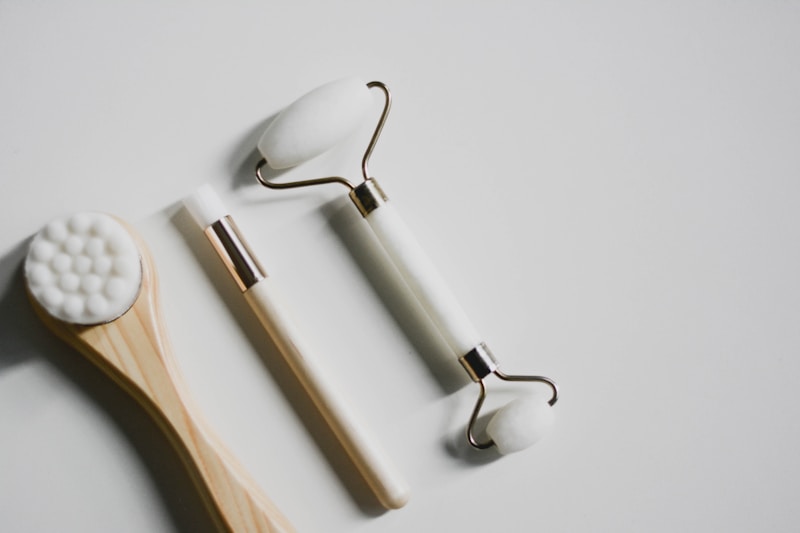Comprehensive Guide to Rehydrating Dry Skin After Extensive Makeup
Comprehensive Guide to Rehydrating Dry Skin After Extensive Makeup
Makeup can transform our appearance and boost our confidence, but it can also take a toll on our skin, especially if used excessively. Rehydrating dry skin after extensive makeup application is essential for maintaining a healthy complexion and preventing skin issues. In this detailed guide, we will explore effective techniques, products, and tips to ensure your skin remains hydrated, fresh, and radiant after a long day of makeup wear.
The Importance of Hydration for Your Skin
Hydration is crucial for every skin type, but it becomes even more vital after wearing makeup for prolonged periods. Makeup products often contain ingredients that can dry out the skin, such as alcohol and certain pigments. Rehydration not only helps in restoring moisture but also aids in repairing the skin barrier, which can be compromised due to extensive makeup use.
Understanding Your Skin Type
Before diving into rehydration techniques, it’s essential to understand your skin type. Different skin types have varying hydration needs:
- Dry Skin: Lacks oil and moisture. Requires rich moisturizers and oils.
- Oily Skin: Produces excess oil. Needs lightweight formulas that hydrate without clogging pores.
- Combination Skin: A mix of dry and oily areas. Balance is key here.
- Sensitive Skin: Prone to irritation. Opt for gentle, fragrance-free products.
Key Ingredients to Look For
When choosing skincare products for rehydrating dry skin, consider the following ingredients:
| Ingredient | Benefits |
| Hyaluronic Acid | Attracts moisture to the skin |
| Glycerin | Enhances skin hydration |
| Shea Butter | Locks in moisture and nourishes |
| Aloe Vera | Soothes and hydrates |
Rehydrating Steps After Extensive Makeup Use
Now that you understand your skin type and key ingredients, let's explore a step-by-step guide for rehydrating your skin.
Step 1: Gentle Cleansing
After removing your makeup, it’s crucial to cleanse your skin gently. Avoid harsh soaps that can strip your skin of its natural oils. A creamy or oil-based cleanser is a great choice for those with dry skin. For oily skin types, consider a gel cleanser that hydrates while removing impurities.

Step 2: Exfoliation
Exfoliating your skin 2-3 times a week helps remove dead skin cells that can cause dryness. Opt for a mild exfoliant with lactic acid or a chemical exfoliant that hydrates while polishing the skin.
Step 3: Hydrating Toner
Using a hydrating toner can help restore moisture balance. Look for toners infused with rose water, aloe vera, or witch hazel, depending on your skin type.
Step 4: Apply a Rich Moisturizer
Post-cleansing and toning, apply a rich moisturizer that contains ingredients suited for your skin type. For dry skin, pick one that includes shea butter or ceramides. If you have oily skin, choose a gel-based moisturizer that hydrates without making your skin greasy.
Step 5: Infuse with Oils or Serums
To lock in moisture, consider incorporating an oil or serum into your routine. Facial oils such as jojoba or argan oil can work wonders for dry skin, while lightweight serums with hyaluronic acid will benefit all skin types.
Step 6: Overnight Hydration Mask
For an extra boost, apply an overnight hydration mask once a week. This can be highly effective in reintroducing moisture and nutrients into your skin while you sleep.
Daily Tips for Maintaining Hydration
Proper skincare doesn’t stop after the first night. Here are some daily tips to maintain your skin’s hydration:
- Stay Hydrated: Drink plenty of water throughout the day. Aim for at least 8 glasses daily.
- Avoid Excessive Heat: Hot showers can strip the skin's moisture. Use lukewarm water instead.
- Use Humidifiers: In dry climates, consider using a humidifier to add moisture to the air.
- Nutrition: Incorporate fruits and vegetables high in water content, such as cucumbers and watermelon, into your diet.
Conclusion: Importance of Post-Makeup Hydration
Rehydrating dry skin after extensive makeup is not just a beauty routine; it is a necessity for maintaining healthy skin. By following the steps outlined in this guide, you can effectively restore moisture, enhance your skin texture, and feel fabulous every day, regardless of makeup use. Remember to understand your skin type, pay attention to the ingredients in your products, and adopt a consistent skincare practice that promotes hydration.
If you experience persistent dryness or irritation despite your efforts to hydrate, consider consulting a dermatologist for personalized advice and treatments.
Remember:
Prioritize hydration just as you prioritize makeup; both play a significant role in your overall appearance and skin health.
